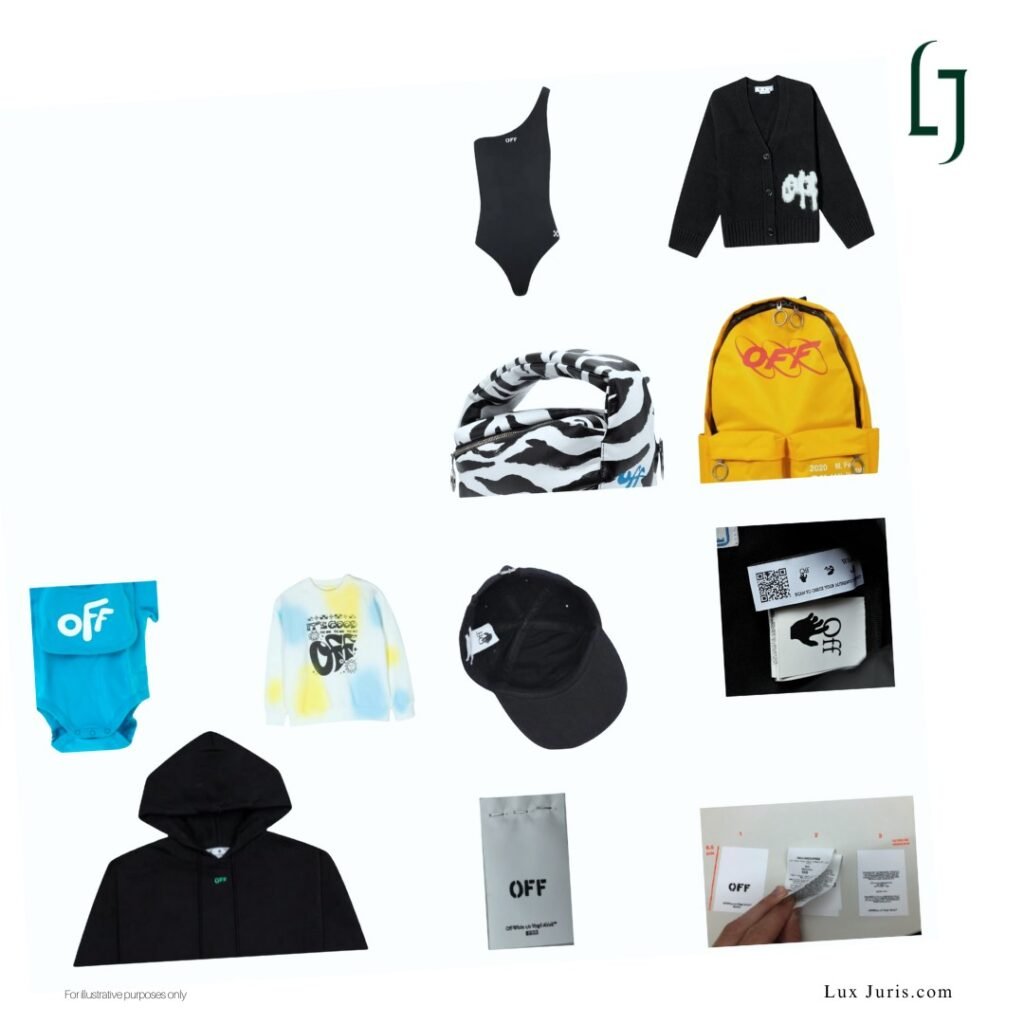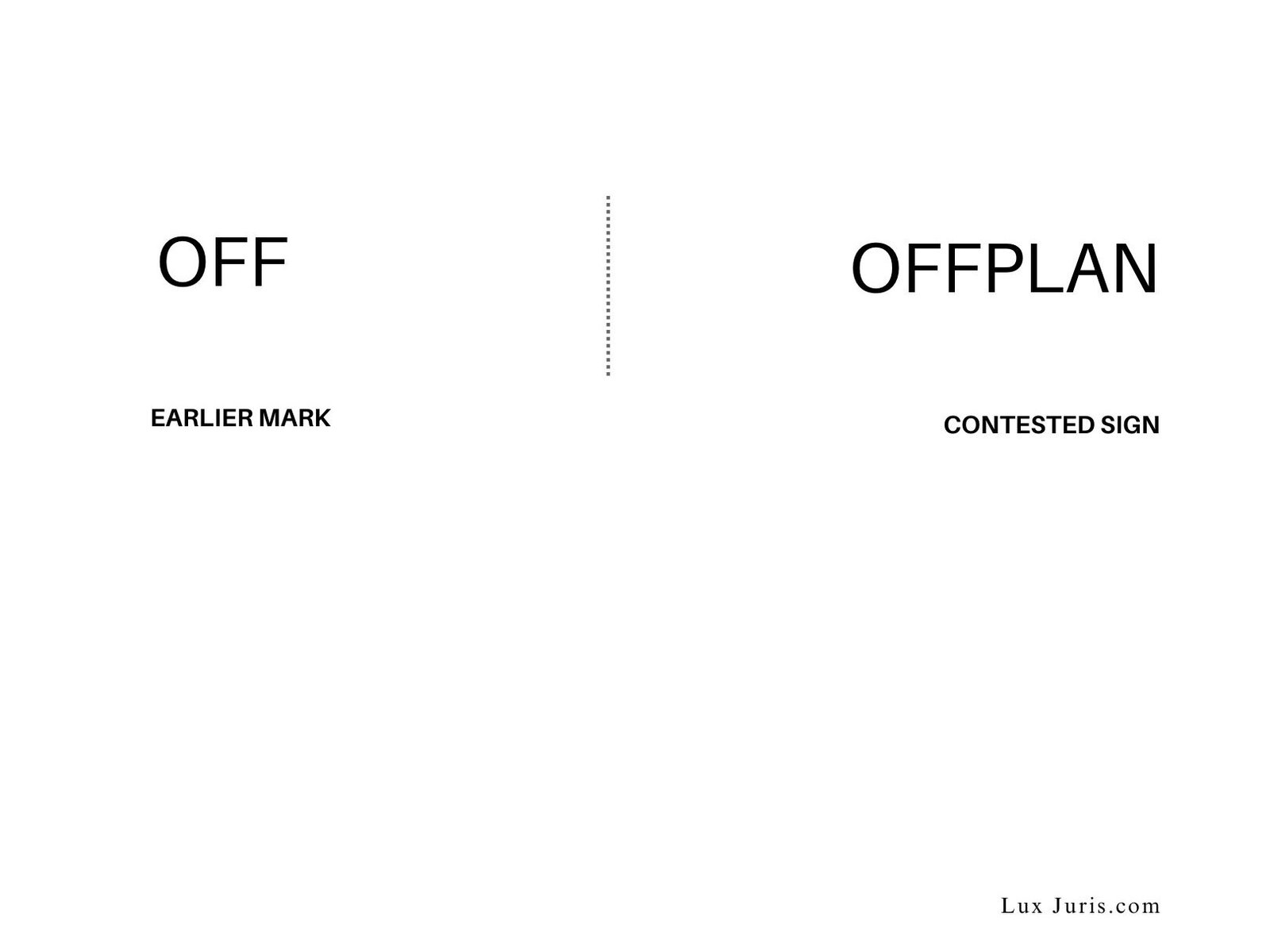Decision date: 11 July 2025
In the fashion sector, a single word such as “OFF” can be sufficient to block another mark if the new sign covers the same or closely related product classes. The risk of rejection is high because the likelihood of confusion for fashion and accessories remains significant. Minor changes to a name do not automatically remove that risk. Within the EU, scrutiny is not generous when the dominant element of a sign is preserved and the goods overlap. The OFF-WHITE vs OFFPLAN opposition shows how a short word mark, when genuinely used and properly maintained, can prevent a later registration in its entirety.
The Application and the Opposition
Barbara und Myriam Christel GbR, a German partnership, applied to register ‘OFFPLAN’ as a word mark for luggage, bags, wallets, key cases, clothing, footwear, headgear and belts in Classes 18 and 25. Off-White LLC opposed the application based on its earlier EU trade mark ‘OFF’. The protected goods included all-purpose carrying bags, backpacks, sweatshirts, sweaters, belts, caps, shoes and sneakers. The overlap between the contested goods and Off-White’s registration was clear and extensive.
Proof of Use
OffWhite had to prove genuine use of its ‘OFF’ mark within the European Union for the five years before the filing date of the contested sign. The opponent filed evidence including lookbooks from Milan and Paris shows, EU press coverage, celebrity images, social media activity, marketing campaigns, store lists and sales invoices. The invoices covered Germany, Italy, France, Benelux, Austria, the Czech Republic and the United Kingdom before the end of the Brexit transition period.

The product identifiers in the invoices were cross-referenced with photographs and labels showing the mark in the registered form. The Opposition Division found that this evidence demonstrated genuine use as to place, time, extent and nature. As a result, the earlier mark remained valid and enforceable for the goods on record.
Overlap of Goods and Relevant Public
The comparison of the goods left little doubt. The contested luggage, bags and wallets fell within the scope of OffWhite’s all-purpose carrying bags and backpacks. Clothing, footwear, headgear and belts matched directly with the sweatshirts, sweaters, shoes, flip flops, sneakers, caps and belts protected under the earlier mark. The intended purpose, channels of trade and target public were the same. The relevant public was the general consumer, whose level of attention for such goods remains average.
Similarities and the Dominant Element
The core question was whether the addition of ‘PLAN’ removed the risk of confusion. The Opposition Division found that it did not. The word ‘OFF’ appears first in both marks and retains its distinctiveness. ‘PLAN’ has no descriptive meaning for fashion goods and does not change the overall impression. In practice, variations such as sub-brands and extensions are common in this sector.

A consumer could easily see ‘OFFPLAN’ as a line under ‘OFF’ rather than an unrelated sign. Visually and aurally, the marks share the same beginning and differ only in the addition of four letters. Conceptually, the shared word ‘OFF’ ties the two signs together. The result is an average degree of similarity, sufficient for a likelihood of confusion to arise.
Outcome
The EUIPO upheld the opposition and rejected the OFFPLAN application completely for all goods. The result was based only on the normal distinctiveness of the ‘OFF’ mark and the clear overlap, without needing to examine whether the mark had any extra level of recognition.
Conclusion
This decision, like others before the EUIPO such as N° 5 vs M5 or Supreme vs Supredog, confirms the EU’s strict approach when examining trade marks that share key elements. The framework remains settled: similarity is assessed visually, aurally and conceptually, then balanced against the likelihood of confusion for the relevant public when the goods fall under the same classes. Where two signs share even part of the same word, (in this case ‘OFF’) and the goods are the same or closely related, the chances of rejection remain high. Here, the marks were not identical but the dominant part was. The result reflects how the EUIPO routinely treats overlap in short word marks when the classes coincide: the similarity, however slight at the end, can be enough to block the later sign in its entirety.
New designers and brands must take care when choosing a name. Any planned mark should be checked against existing registrations covering the same product classes, especially when a single word or short sign is involved. Overlooking partial similarity, even where the new name appears different at first glance, can lead to a complete refusal if the core element matches and the goods overlap. Clearing these points early remains essential before launching a label or collection.
Source:
